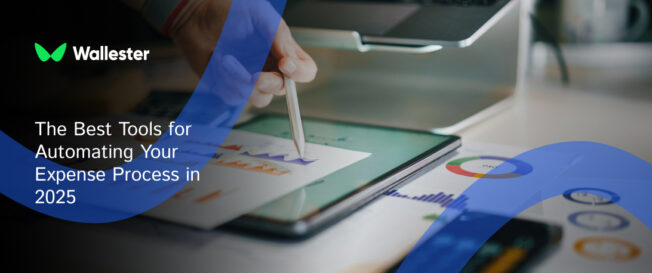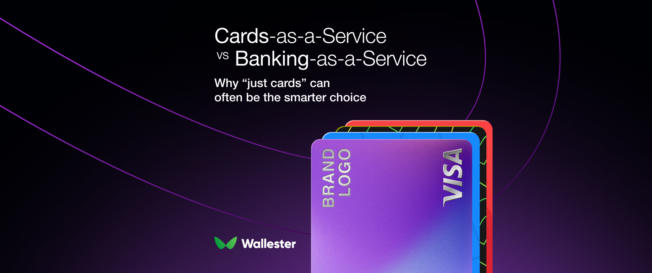Manual expense reporting is a time-consuming process. Paper receipts get lost, spreadsheets break, and approvals take too long. In 2025, companies are switching to smarter tools. The best expense management software helps you track expenses, cut processing time, and get instant financial insights without the admin load. It keeps your accounting systems clean, your teams efficient, and your reporting accurate. The right solution turns chaos into a clear, reliable process.
What is expense management software?
Expense management software is a type of management solution that replaces traditional methods of tracking business expenses. It handles the entire process, from submitting expenses to final reimbursement and reporting. The goal is to reduce manual tasks, save time, and improve financial control.
Employees use a mobile app to snap receipts. The system extracts the data automatically. Managers approve or reject expenses using customised workflows. Finance teams receive structured data that connects directly to accounting systems without manual data entry.
The right expense management software works with your accounting tools, adapts to your workflows, and supports policy enforcement at every step. It simplifies expense reporting and provides better visibility over company spending.
What features does expense management software have?
Modern platforms are packed with expense management features, including real-time expense tracking, automated approval workflows, policy enforcement, and spending limits tied to employee roles or project types.
The key features to expect:
- Mobile app functionality with offline access and live sync
- OCR-based receipt scanning and automatic categorisation
- Customisable approval workflows that reflect your team structure
- Instant alerts for spending limits and policy violations
- Seamless integration with accounting software and payroll systems
The best spend management software links virtual and physical cards directly to expense tracking. Every transaction is recorded in real time, making expense reporting more accurate. This helps finance teams generate detailed reports with just a few clicks.
Further Reading: The Complete Guide to Business Expense Management
What is the use of expense management software?
Companies use expense management software to simplify how they manage expenses across departments and locations. Instead of spreadsheets and manual checks, finance teams get clean, categorised data tied to real transactions.
The software supports the entire process. Employees can submit expenses quickly. Managers approve claims without delay. Finance teams reconcile records without chasing receipts. The data is stored securely and can be used to generate detailed reports for audits, budgeting, and cash flow planning.
Beyond speed, the software also helps identify cost-saving opportunities. It tracks spending trends, flags unnecessary expenses, and supports better decisions with real-time financial insights.
Why should you use expense management software?
Manual processes lead to slow approvals, lost receipts, and inaccurate records. These problems build up over time. Delayed reimbursements frustrate employees. Policy breaches go unnoticed. Reports get delayed or require extensive cleanup.
A good expense management solution removes these issues from the start. It standardises the way business expenses are submitted, reviewed, and processed. Finance teams receive up-to-date data. Managers stay within budget. Employees get paid faster and with fewer questions.
The software helps with maintaining compliance by enforcing policy rules automatically. It tracks every expense, maintains audit trails, and makes financial reporting simpler and more accurate.
Further Reading: Top Expense Management Challenges for SMBs (And How to Solve Them)
What are the benefits of expense management software for my business?
The right expense management solution delivers measurable improvements across multiple areas of your business. Processing costs drop significantly when you eliminate manual data entry and reduce approval delays. Most companies see ROI within six months of implementation.
Accuracy improvements prevent costly errors that can compound over months of financial reporting. Automated systems eliminate transcription mistakes, ensure consistent categorisation, and maintain complete audit trails. This accuracy extends to compliance reporting, tax preparation, and financial analysis.
Financial control improves with up-to-date visibility into company spending. Instead of discovering budget overruns during monthly reviews, you can spot problems as they develop and take corrective action immediately. The analytics capabilities help identify trends, optimise spending, and plan future budgets more accurately.
Benefits for the finance squad
Finance teams often lose time chasing receipts, correcting errors, and checking compliance by hand. A proper expense management system removes the need to enter the same data over and over. Instead, expenses arrive already sorted and matched with the correct accounts.
They can see where money is going in real time. This helps spot unusual activity, compare departments, and give useful feedback to managers before problems grow.
Clear rules and automated approvals keep reports clean from the start. The finance team can stop chasing paperwork and spend more time reviewing results and planning ahead.
Benefits for managers
Managers no longer slow down the approval process. They can review expenses from their phone or laptop, approve items in groups, and stay on top of spending without leaving their usual workflow. Alerts let them know when someone is close to reaching their spending limit, so they can act early if needed.
The software gives them a running view of team budgets. If costs start to rise on a specific project, they can adjust quickly instead of reacting after the fact. They can also compare spending across periods to see what’s changed.
Rules apply to every submission in the same way. That means fewer misunderstandings and no need to explain why one expense was accepted and another rejected. The process is faster, clearer, and easier to manage at scale.
Benefits for employees
Submitting expenses takes minutes. Employees open the mobile app, snap a photo of the receipt, and the details are filled in automatically. There’s no need to keep stacks of paper or fill out forms by hand.
They can see the status of each claim at any time. If something is approved or flagged, they know right away. Payment arrives faster and with fewer surprises, so they’re not left wondering when the money will show up.
The whole process takes less effort. Instead of dealing with receipts and checking for updates, employees can focus on their work without interruptions.
Choosing an expense management software: What should you look for?
Choosing the right expense management software means understanding your company’s needs and long-term goals. Start by identifying pain points in your current expense management process. Look at what slows you down, what causes errors, and where the biggest complaints come from.
Pay close attention to integration. The system should connect smoothly to your accounting software and project management tools. This avoids duplicate work and keeps financial data flowing automatically.
Look for:
- Flexible approval workflows that match your hierarchy
- Smooth integration with your full accounting stack
- Support for virtual and physical cards
- Scalable pricing for growing businesses
- Custom reports and real-time visibility over company spending
Always test the interface before you commit. If submitting expenses or generating reports feels slow or confusing, your team will avoid using it. A clean interface helps with adoption and makes the system more effective.
Support also matters. Choose providers with strong onboarding, available help desks, and clear documentation. Good support shortens the learning curve and improves long-term value.
Further Reading: Enhancing Travel Expense Management with Virtual Cards
Trends in expense management software for 2025
In 2025, expense management software is no longer limited to recording transactions. It plays an active role in how companies handle spending, enforce policies, and plan budgets. The most advanced tools offer live control, better forecasting, and smoother workflows from start to finish.
The key developments across the industry are the following:
- Artificial intelligence is being used for practical tasks
AI now supports expense management in specific, measurable ways. It flags duplicate entries, detects suspicious patterns based on past behaviour, and highlights inconsistencies before expenses are approved. Instead of reacting after a mistake, finance teams can act immediately with reliable data. These systems improve as more information is added, making the process more accurate over time.
- Forecasting tools help teams see beyond current reports
Predictive analytics allows companies to estimate future costs based on earlier activity. If a department usually spends more during certain months, the system accounts for that automatically. It uses historical spending, project timing, and external factors to provide budget estimates that are based on actual behaviour, not guesswork.
- Mobile apps have become the standard way to interact with the system
Most companies now expect employees to use a mobile app to submit expenses, track approvals, and manage corporate travel. Submissions happen on the spot, not at the end of the week. Apps include features like offline access, receipt scanning, and automatic syncing once the device is back online. This matters especially for field staff or remote teams who don’t have easy access to desktop tools.
- Live policy enforcement at the point of submission
New software doesn’t wait until reports are submitted to check for errors. When an employee enters an expense that breaks a rule, the system flags it immediately and offers options to adjust. It stops mistakes before they happen and cuts out the corrections that usually follow.
- Expense and travel management are being combined
Many companies that manage corporate travel have moved away from separate platforms. Booking, per diems, mileage tracking, and reimbursements now live inside one system. This creates a clear link between what was planned and what was spent. It also helps managers approve trips with full cost visibility.
- Tighter links to financial infrastructure
Expense management platforms are adding integrations with payroll, project management tools, and accounts payable systems. Direct connections to payroll, accounts payable automation, and project management tools allow data to move freely between systems. This helps finance teams track expenses across the entire organisation and build reports without exporting files or merging spreadsheets.
- Better support for growing businesses
Software vendors are offering more flexibility for companies that are expanding. Tools can now handle changing approval chains, new team structures, and updated policies without breaking. This prevents companies from outgrowing their system and having to migrate after just a year or two. It also lets finance teams manage more employees without adding more manual tasks.
The best expense management software in 2025 is built for real-time use. It helps teams avoid mistakes, work faster, and make clearer decisions based on current and historical spending. These tools are no longer isolated systems. They are part of the core financial workflow, used every day by employees, managers, and finance staff.

The best expense management tools of 2025
There are plenty of strong expense management tools available. Some work better for small teams, others handle complex approvals or high volumes of spending. Each tool suits different setups, from simple tracking to detailed reporting and control.
1. Wallester
- Issues virtual and physical Visa cards with immediate expense visibility
- Links transactions directly to the expense system with automated categorisation
- Offers custom spending limits, receipt reminders, and built-in analytics
- Works well for companies that want full control from payment to reporting
2. Zoho Expense
- Suitable for small businesses and growing teams
- Includes mobile receipt capture, mileage tracking, and per diem handling
- Handles multi-currency expenses and VAT calculation
- Approval workflows and reporting dashboards are easy to customise
3. SAP Concur
- Built for enterprises with multi-entity structures and complex workflows
- Manages corporate travel from booking to reimbursement
- Applies policy enforcement at every step and supports detailed budgeting
- Includes AI-powered features for timeline building and gap detection
4. Expensify
- Uses SmartScan to pull receipt details automatically
- Supports bulk uploads, shared expenses, and quick report generation
- Integrates with a wide range of accounting and ERP platforms
- Best suited for teams that need speed, flexibility, and scale
5. Pleo
- Combines corporate card usage with live expense tracking
- Applies rules-based categorisation and department-level budgets
- Mobile app is central to its process, with fast submission and clear overviews
- Works well for teams that want transparency without complexity
6. Xero
- Connects expense tracking directly to the Xero accounting platform
- Ideal for small businesses that want a single system for everything
- Includes receipt capture, matching, and simple approval flows
- Created for teams with light admin who still need control
7. Spendesk
- All-in-one spend management tool with card control, invoice handling, and budgeting
- Custom approval paths by role, team, or project
- Integrates with project management systems to tie spend to activity
- Suits companies looking to manage all outgoing payments in one place
8. QuickBooks Online
- Expense tracking is built into its accounting suite
- Offers receipt scanning, category rules, and basic approval flows
- Ideal for teams already using QuickBooks who want to avoid switching tools
- Simple to set up and maintain without specialist support
9. Ramp
- Focuses on controlling spend with automated rules and spend alerts
- Flags duplicates, blocks overspend, and provides savings suggestions
- Syncs card activity to reports in real time
- Works well for teams looking to cut waste and tighten controls
10. Rydoo
- Created for international teams managing expenses across currencies and tax zones
- Mobile app supports receipt capture and submission from anywhere
- Approval workflows support local compliance requirements
- Good fit for decentralised companies with regional policies
How to implement expense management software
Successful implementation requires systematic planning that addresses both technical and human factors. Begin with comprehensive assessment of your current expense management process, documenting workflows, identifying pain points, and establishing clear goals for improvement.
Technical implementation should proceed methodically, starting with system configuration and integration setup. Work closely with your vendor to configure approval workflows, policy rules, and integration settings that match your requirements. Test all integrations thoroughly to make sure data flows correctly and completely.
Follow this implementation approach:
- Planning phase – Define requirements, select software, prepare teams.
- Configuration phase – Set up workflows, policies, integrations.
- Testing phase – Validate all features and data flows.
- Training phase – Prepare users for system rollout.
- Rollout phase – Deploy gradually with support ready.
- Optimisation phase – Monitor usage and refine processes.
Training deserves significant attention during implementation. Develop programmes that address different user roles, from employees submitting expenses to finance teams managing the system. Offer multiple training formats including live sessions, recorded videos, and written documentation.
Monitor implementation closely during the initial months, tracking adoption rates, processing times, and user satisfaction. Use this data to identify areas needing additional training or system adjustments. Regular feedback sessions help identify issues early and demonstrate that user input drives system improvements.
Further Reading: How to Implement Virtual Cards in Your Company
Enhance your expense management with Wallester
Wallester offers a full-stack expense management platform built around its own Visa card issuing infrastructure. Unlike many tools that rely on third-party cards or manual expense matching, Wallester links every transaction directly to a specific employee, team, or project the moment it happens.
The platform is structured to give finance teams full visibility and control across the entire spending process, from issuing cards to generating reports.
Key capabilities include:
- Instant card issuing
Create virtual or physical Visa cards in seconds, assign them to employees or departments, and set specific rules for each one, including daily, weekly, or monthly limits, merchant category restrictions, and spending windows.
- Live expense tracking
Every transaction made with a Wallester card appears immediately in the system. Each expense is automatically logged, categorised, and matched with a receipt if available. Finance teams do not have to wait for end-of-month uploads or manual entries.
- Integrated approval workflows
Expenses can trigger automatic approvals based on predefined limits or policies. Custom workflows allow companies to define who reviews each type of spend, with no need for one-size-fits-all settings.
- Receipt capture and automation
Employees receive a push notification after each transaction. They can upload a receipt from their phone on the spot. The platform uses OCR to extract relevant data and match it with the transaction automatically.
- Multi-level controls
Admins can freeze cards, update limits, or change permissions in real time. Shared cards can be issued to departments or project teams with individual tracking by user.
- Accounting integration
Wallester supports integration with popular accounting systems through API or file exports. Each expense is tagged, categorised, and ready for reporting without double entry.
Export and audit readiness
Reports can be filtered by user, project, cost centre, or card. All activity is timestamped and stored, making audits faster and easier. The system also retains evidence of approvals and policy checks.If you’re looking for an expense platform that connects real-time card transactions with clear reporting and control, take a look at Wallester Business. It’s built for companies that manage team spending, approval workflows, and accounting exports – all in one system.


